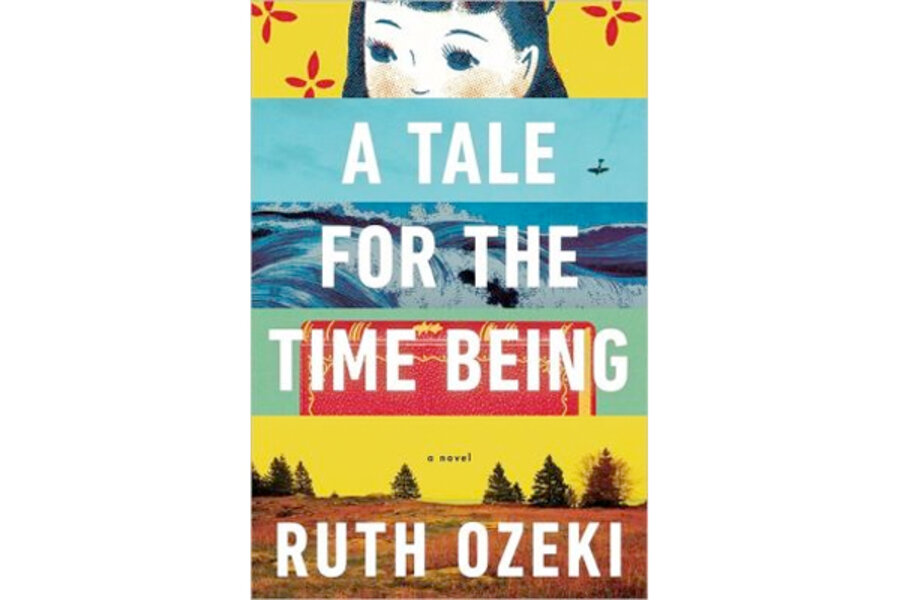Off the coast of British Columbia, a writer named Ruth and her husband Olivier find a message in a Hello Kitty lunchbox. As is traditional with the bottled variety, it turns out to be a call for help – in this case, an extended suicide note written in purple ink between the covers of Proust. The writer says she is a teenage girl sitting in a fetish cafe in Tokyo, texting her 104-year-old great grandmother, “the famous anarchist-feminist-novelist-turned-Buddhist-nun of the Taisho era.”
Also in the lunchbox, which Ruth's husband, Oliver, theorizes may have washed up from the 2011 tsunami, are some old letters and an engraved watch, all of them protected by a waterproof freezer bag.
Naoko Yusatani used to be a sunny California girl until her programmer father lost his job and they returned to Japan. It's not much of a homecoming. Her fellow students orchestrate a campaign of bullying – the more minor incidents of which involve being jabbed by nail scissors and burned by cigarettes – before staging a mock funeral. This is ugly stuff: the viciousness and depravity of Nao's classmates and "friends" is not for the weak of stomach. Having bombed her exams, Nao spends her days at Fifi's Lovely Apron, writing and waiting for her dad to kill himself. So far, in her opinion, he's made a poor job of it.
It's no accident that Nao (pronounced now, pun intended) writes her diary in Proust's “In Search of Lost Time.” A Tale for the Time Being, Ruth Ozeki's third novel, is obsessed with the elasticity of time and the elusiveness of now. But it's also full of Nao's vibrant voice and plenty of Japanese slang, which Ozeki translates with footnotes. Any Terry Pratchett fan can tell you that a well-written footnote inevitably improves a narrative. Ozeki has a gift for them.
Ozeki names her writer Ruth, which readers will either find endearing or needlessly distracting. (Put me in the second camp.) Struggling with a failed memoir about taking care of her mom after she was diagnosed with Alzheimer's disease, Ruth feels trapped in “a fog-enshrouded outpost on the mossy margin of the world.” Nao's diary is alive in a way that nothing Ruth has written in a decade can match, and Ruth can't bear the thought that the girl may have killed herself or died in the tsunami that killed more than 15,000 people. (In a contrived plot device, Ruth determines to limit her reading to one entry a day, which doesn't jibe with her frantic search for clues. Fortunately, readers don't have to stick to that arbitrary limit.)
Despite Ruth's sense of urgency in finding Nao, her search is stymied by the fact that the teenager doesn't have a digital footprint and there is no trace of her “famous” foremother. There are, however, lots of discussions about Buddhist teachings, Japanese crows, gyres in the ocean, and quantum physics. (Attention novelists: Schrodinger's cat officially has been exhausted as metaphor. Anyone considered the Higgs bosun particle? Or how about string theory? I'm sure “The Big Bang Theory” guys could come up with a substitute.)
While Nao never does get around to telling her Jiko's life story – a tragic shame, as far as I'm concerned – Ozeki's puzzle-box narrative makes room for Jiko's son, Haruki, a philosophy student conscripted near the end of World War II, who volunteers to be a kamikaze pilot. Despite three generations of a family contemplating suicide, “A Tale for the Time Being” comes down decisively on the side of life.
For all its big ideas, “A Tale for the Time Being” never stints on readability. In fact, it has so much forward propulsion, it leaves a few of them floating in the wake of its teenage heroine. But as the plot spins through its own gyre of philosophical flotsam, enough stick, like the barnacles attached to the freezer bag, to offer a thoughtful tale, while readers hope that Nao, who calls herself “a little wave person,” finds a safe shore.





